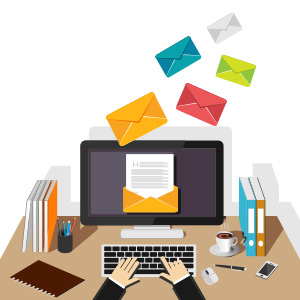September 28, 2021
Five Ways to Improve Workplace Productivity
Take a look at your company’s processes and eliminate inefficiencies and time-wasting tasks.
There are more than 10 million open jobs in the U.S., and almost one-third of small-business owners say they’ve had open positions they were unable to fill for at least three months, according to a recent survey by CNBC and Momentive. It’s a situation that’s leaving many businesses trying to do more with less – which is rarely a winning prospect. Rather than overworking your staff, take a long, hard look at your processes to determine if there are any inefficiencies and time-wasters that have built up. Try these five strategies to help your staff make the most of their workdays.
5 Tips for Improving Workplace Efficiency on Biteable.
1. Eliminate unnecessary meetings. Before you schedule a meeting, take a few seconds to determine whether there’s a more efficient way to relay the necessary information. Would a quick phone call or bullet-pointed email do the trick instead? When you do call a meeting, limit attendance to those involved in a particular project. Create a detailed but flexible agenda and share it with attendees in advance of the meeting, so everyone is prepared. Stick to the schedule and don’t go over your allotted time.
Another thing to consider is blocking off a few hours a week – perhaps Wednesday afternoons – where no meetings can be scheduled, to give your staff a chance to delve into the deep work that gets neglected when their focus is scattered.
2. Focus on clear communication. Professionals spend 28% of their day on email, according to a McKinsey analysis. How much of that is spent on back-and-forth messages trying to clarify the sender’s original point? To cut back on such time sinks, keep your emails short and to-the-point. Include all the salient details, but don’t try to cram too much into one message. And if you’re finding it difficult to work out all the details via email, don’t be afraid to pick up the phone. A five-minute conversation can often be more efficient and productive than an ongoing string of emails.
3. Set SMART goals. Goal-setting can be a great way to motivate your team and add focus to your work, but if you don’t have the right roadmap to reach your eventual destination, you’re sure to get lost along the way. SMART goals are Specific, Measurable, Achievable, Relevant and Time-Bound. If you’ve never created a SMART goal before, consider downloading a template like this one from HubSpot to use as a guide. Be sure to check in regularly with your team as you’re working toward your goal, and once you’ve achieved it, evaluate the process to see what was most successful and what might need to change for future goals.

Professionals spend
28%
of their day on email
4. Provide adequate training for employees. Rather than look at training as time wasted, consider how much more efficient your staff will be if they have the right skills for the job and aren’t trying to muddle through confusion on their own. Be sure you have multiple workers cross-trained on various positions at your company, so that there are people on hand to help out when someone is sick or if a particular department is slammed.
5. Offer incentives and appreciation. There are so many ways to thank your employees, and they don’t have to cost a fortune. A handwritten note with heartfelt sentiments goes a long way. Hiring a food truck to come to the office at lunch time or sponsoring a happy hour or ice cream social are also fun ideas, but be wary of the generic office pizza party, especially if it’s presented as a “bonus.” Instead, take some time to discover what your employees actually want and tailor your incentives accordingly. Perhaps they’d like to choose from a premium logoed product, like a cozy blanket or high-end drinkware, or maybe they want the option for an extra paid day off as a reward for a job well done.
